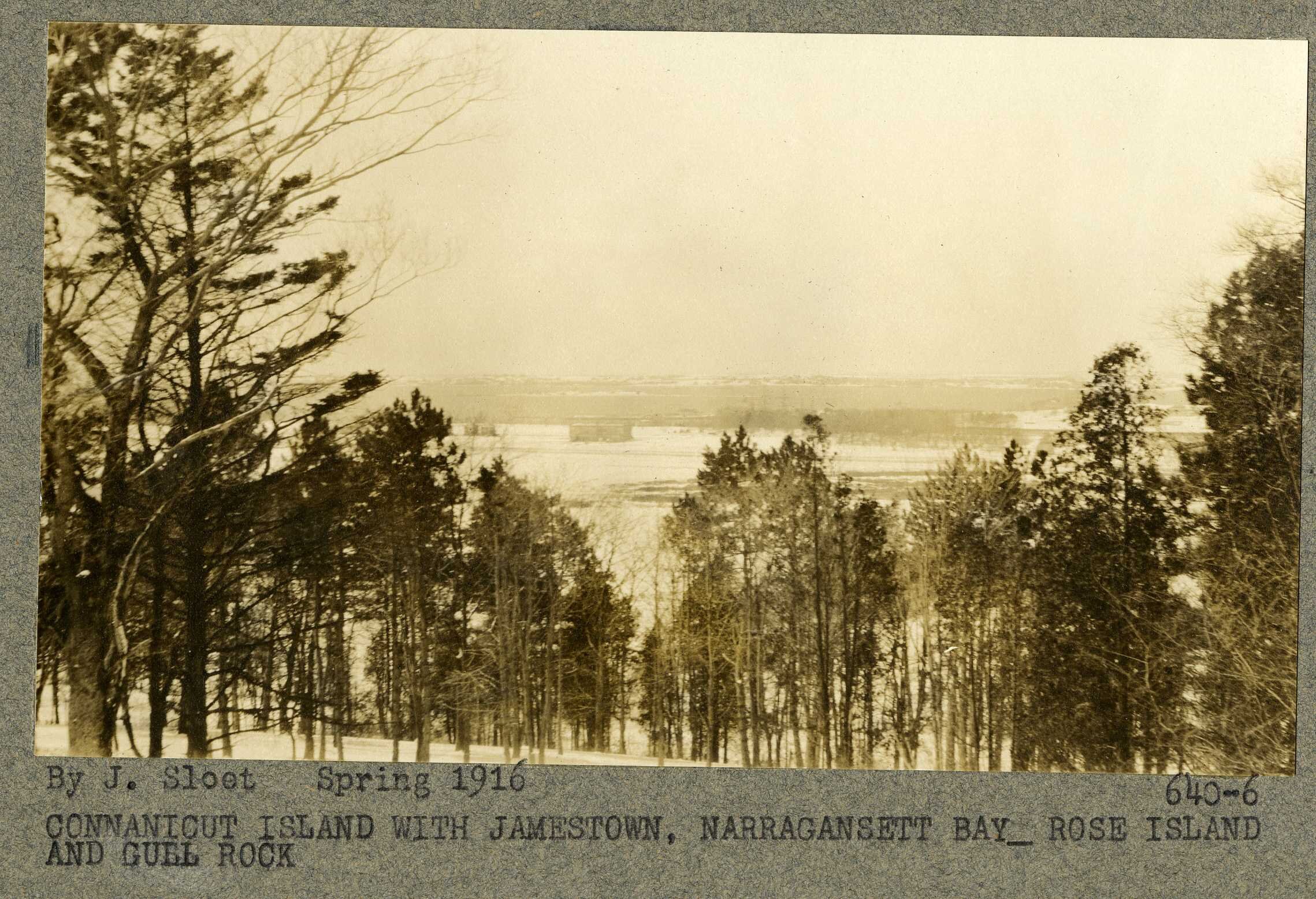
Miantonomi Park Reforestation
Miantonomi Park is Newport’s largest forest, but this critical woodland is currently under dire threat from invasive understory species. Roughly 80% of the parks area consists of mature forest, mostly comprised of invasive species such as English oak (Quercus robur), Japanese knotweed (Reynoutria japonica), bittersweet (Solanum dulcamara), multiflora rose (Rosa multiflora) and other dense, hard to remove shrubs which are taking over the woodlands.
Approximately one third of the park’s mature forest canopy has been lost in the past decade, letting in light to the forest floor and allowing invasive species to out-compete native species.
This color-enhanced image makes clear the scale of Miantonomi’s canopy decline. Dead and dying trees (highlighted in red) litter the park’s woodlands.
Over the past seven years, NTC, alongside the Newport Public Services Department and several groups of volunteers from Roger Williams University have made progress in controlling these understory invaders through an intensive mowing and removal program. In order to cement this progress and re-establish native trees in the woodlands, the Newport Tree Conservancy has received funding to conduct a reforestation project within a half-acre plot on the Southeast corner of the woodlands.
















With many of the English oaks failing, as well as the aging of many of the native black cherries, Miantonomi’s forest is at a crossroads. Along with extensive efforts to control invasive plants, we are working to establish and encourage native tree populations that will reinvigorate the Miantonomi Park ecosystem for years to come.
In 2019, the Newport Tree Conservancy, in collaboration with local volunteers planted 30 new native trees; a combination of Rhode Island’s State Tree, red maple (Acer rubrum), tamarack (Larix laricina) & yellow birch (Betula alleghaniensis).
Progressing towards a sustainable and re-balanced forest, Newport Tree Conservancy volunteers and fellow organizations planted an additional 60 trees in October of 2020, for a total of 90 that year. Since 2020, a new group of over 100 indigenous trees have been planted each year in October. These new trees will help to stabilize current conditions in the woodlands providing competition to the invasive species. Newport Public Services Department will continue the intensive mowing program, suppressing the invasive species as well.
To date, we have planted over 300 new trees in the park’s woodlands and we look forward to watching them grow for future generations of park-goers to enjoy.
In 2023 our Tree Corps had a total of 69 volunteers, put in 345 service hours, and cared for 80 trees in Miantonomi Park alone. 2021 brought our volunteers up to 80 participants and a total of 235 service hours. We hope to see you in 2023 and beyond.
You can be part of this initiative by volunteering for special events dedicated to planting in Miantonomi Park.

Species of Trees Planted
Red Maple
Acer rubrum
Hackberry
Celtis occidentalis
Hazelnut
Corylus americana
Sycamore
Platanus occidentalis
Red Oak
Quercus rubra
Tupelo
Nyssa sylvatica
Black Willow
Salix discolor
Pussy Willow
Salix discolor
Tulip Poplar
Liriodendron tulipifera
Vernal Witch Hazel
Hamamelis vernalis
Black Cherry
Prunus serotina
River Birch
Betula nigra
Swamp White Oak
Quercus bicolor
“I wanted to bring my daughter here, the planting is special, something my daughter and I can look back on years from now as we grow with the trees.”
— Nycole, 2019 planting volunteer
Tree Updates!
2019 & 2020 Reforestation Plants
Miantonomi Throughout the Years
“A vista was cut here in Southeasterly direction giving on clear days a glimpse of the Atlantic Ocean and Easton’s Beach, the only one to be obtained from that Hill”
J. Sloet, 1916
“A glimpse of Narragansett Bay towards the Southwest, showing the Channel and Connanicut Island”
J. Sloet, 1916
“Connanicut Island with Jamestown, Narragansett Bay, Rose Island and Gull Rock”
J. Sloet, 1916











